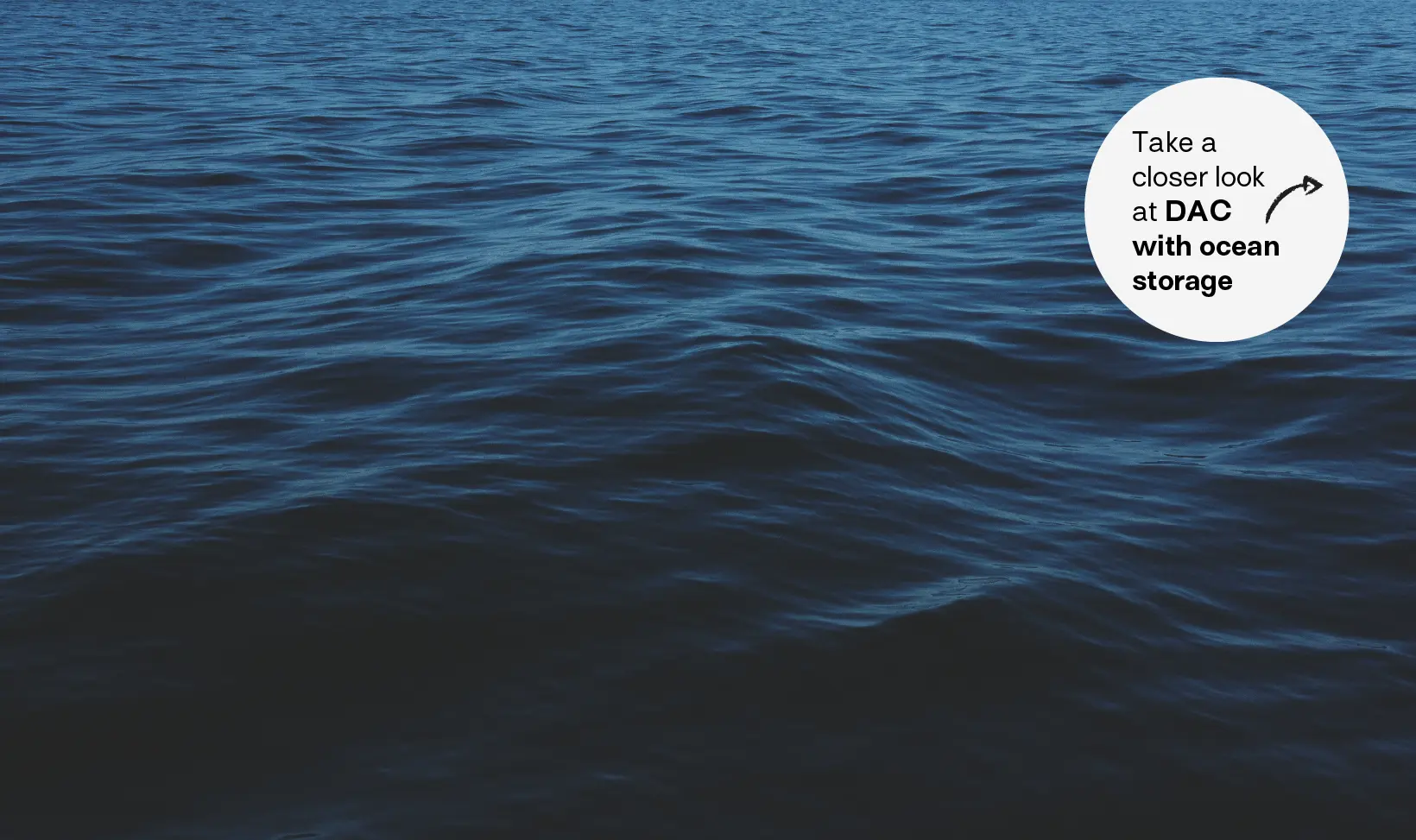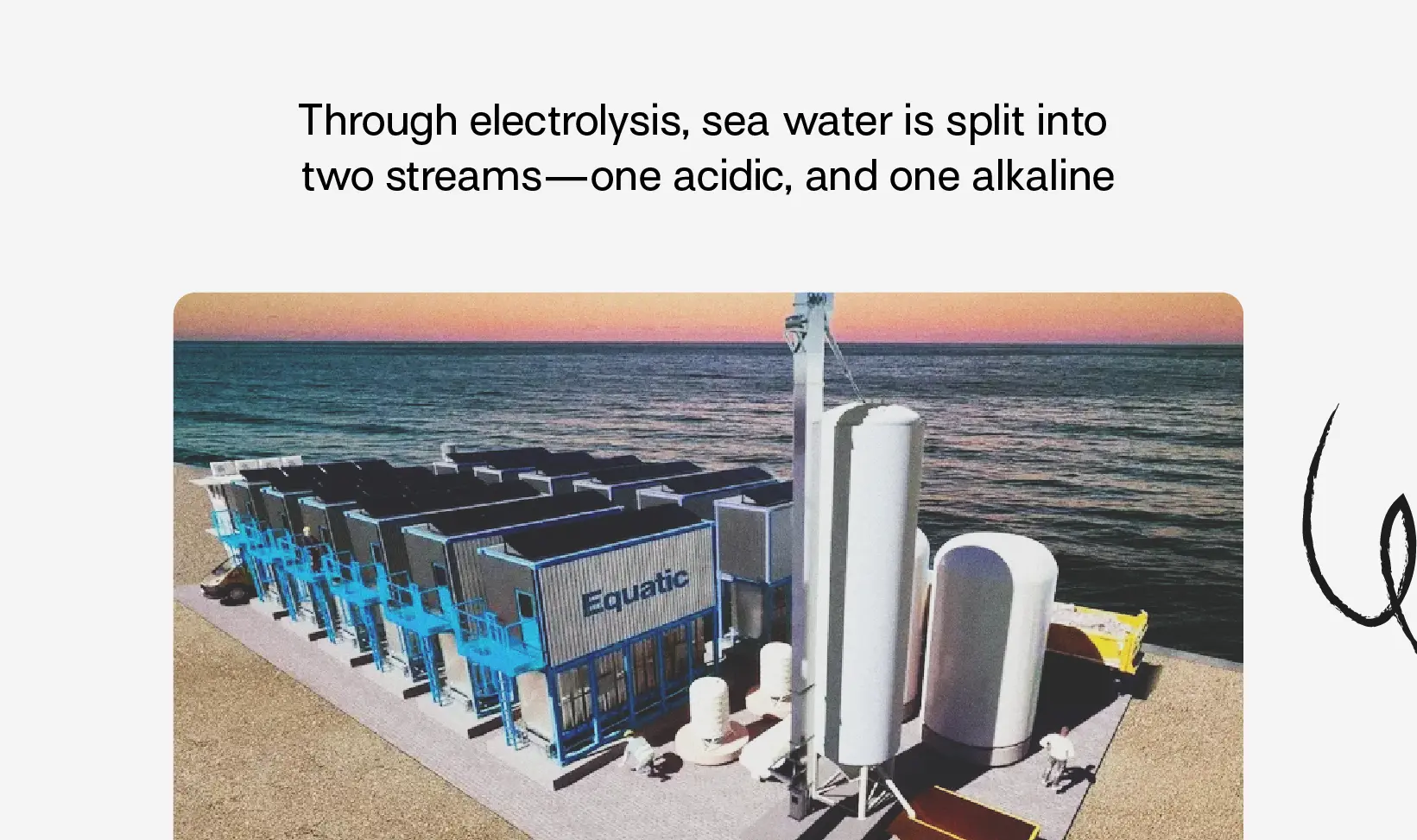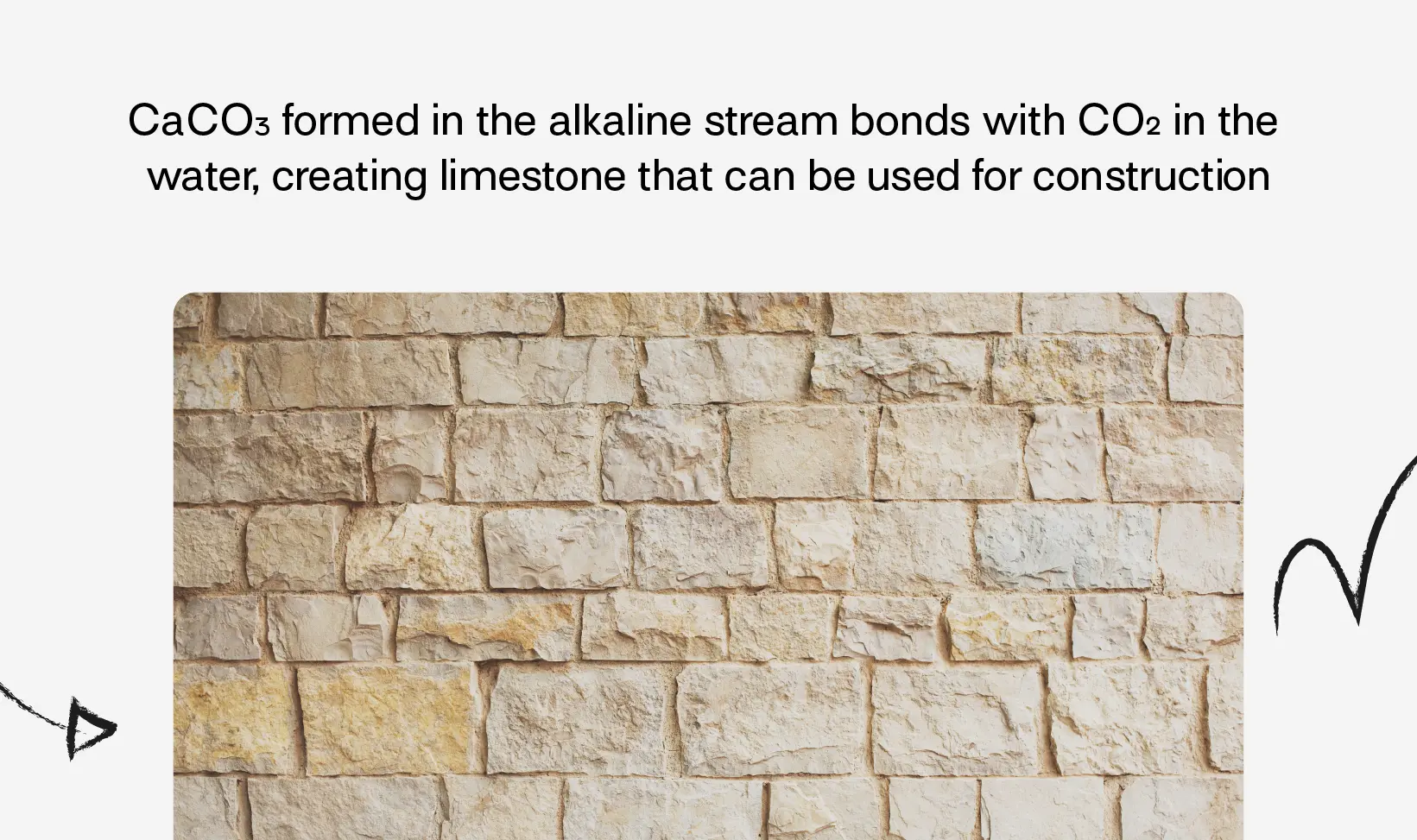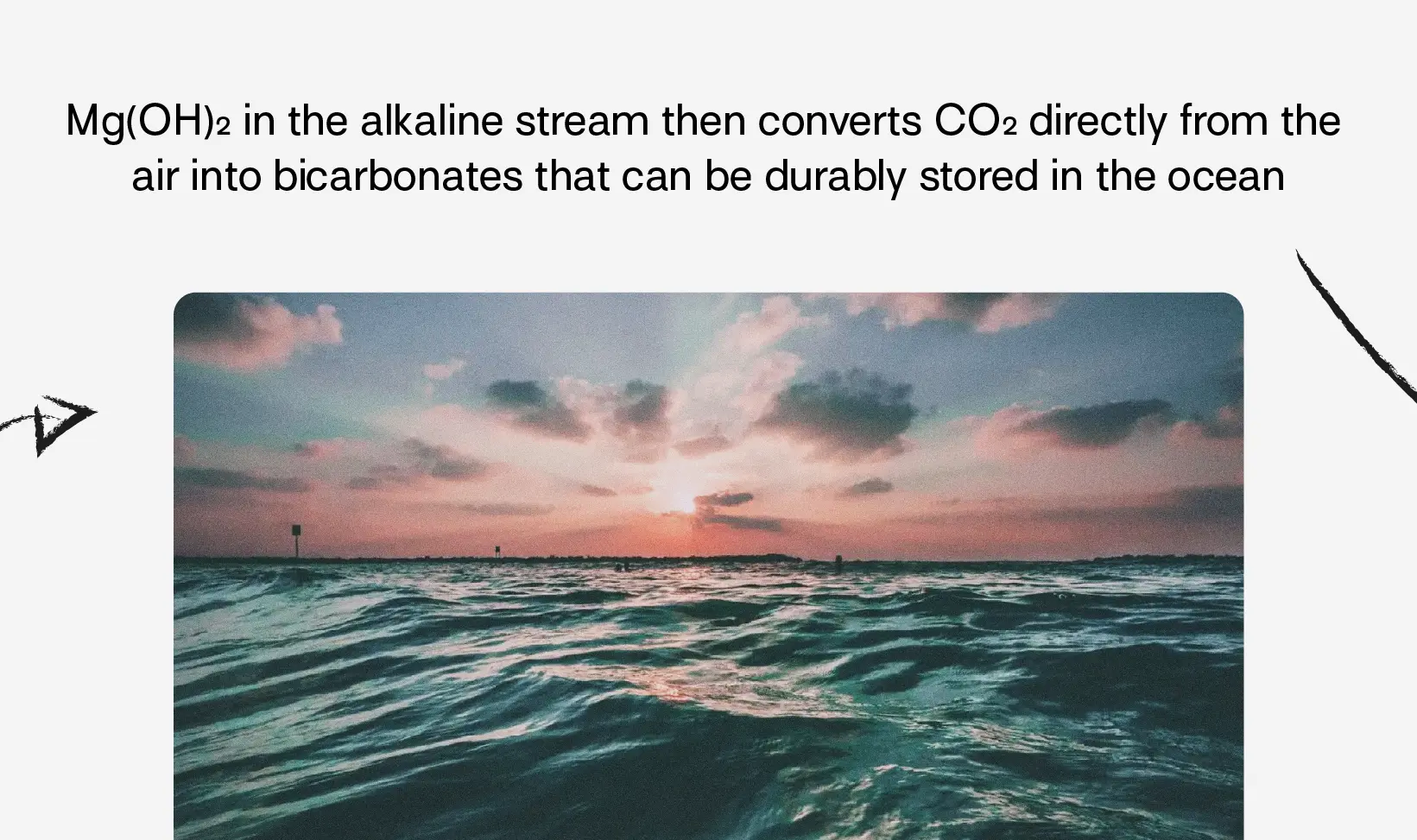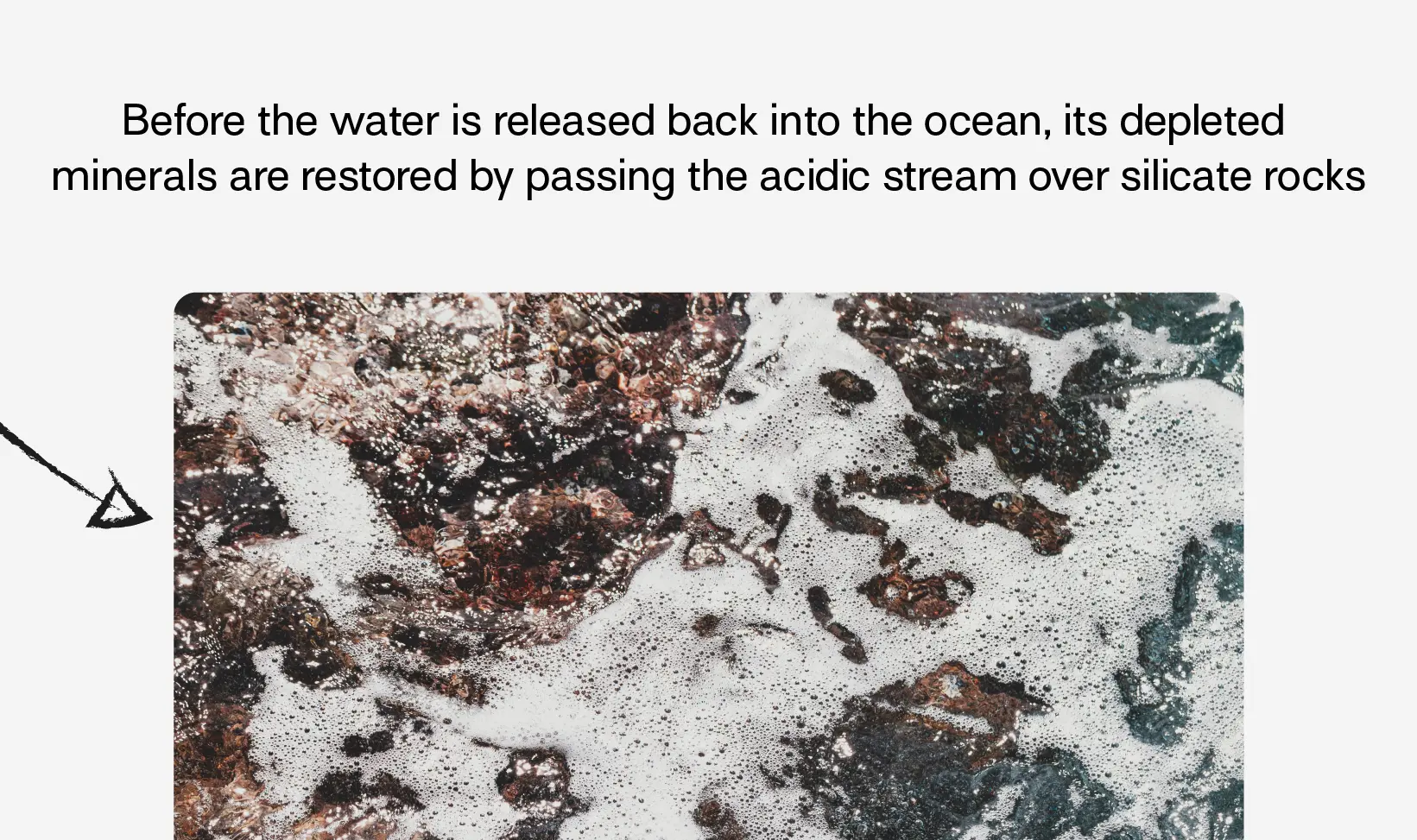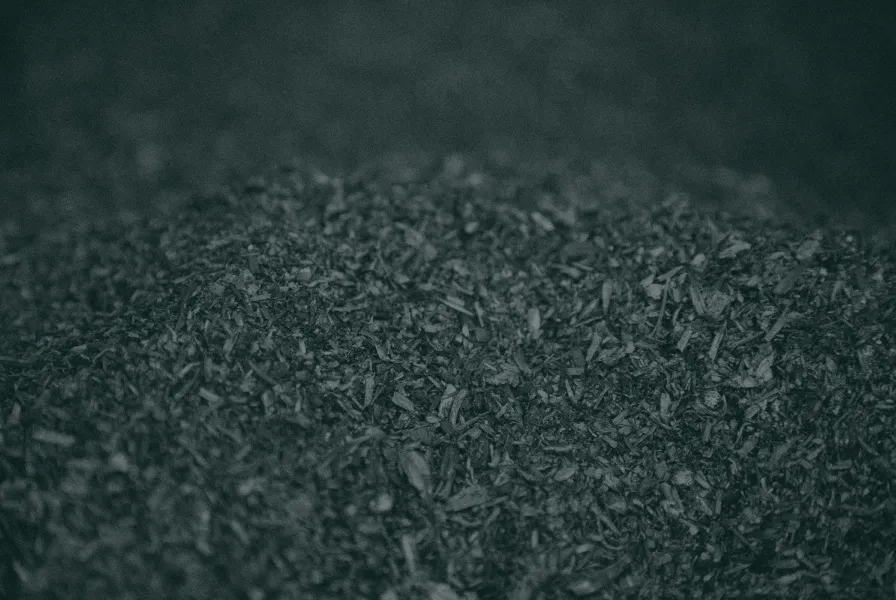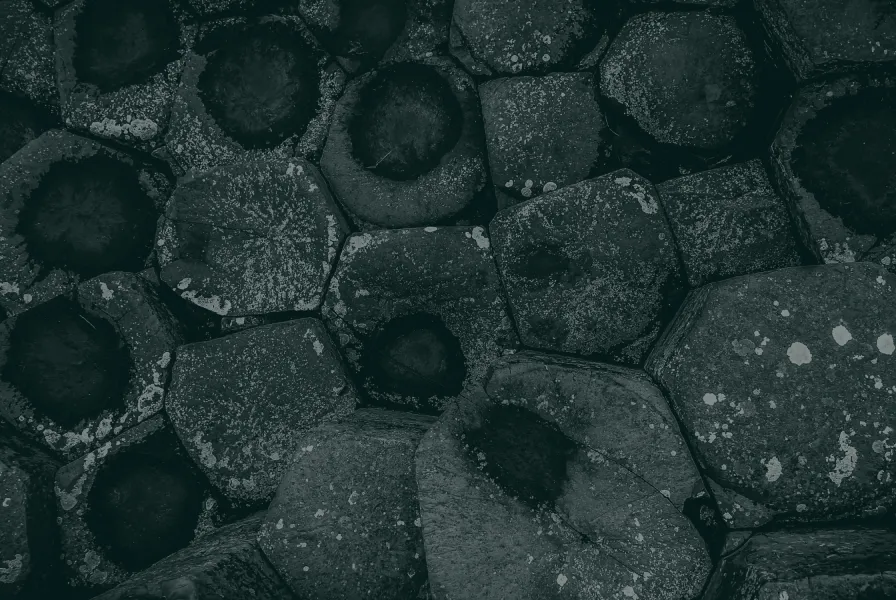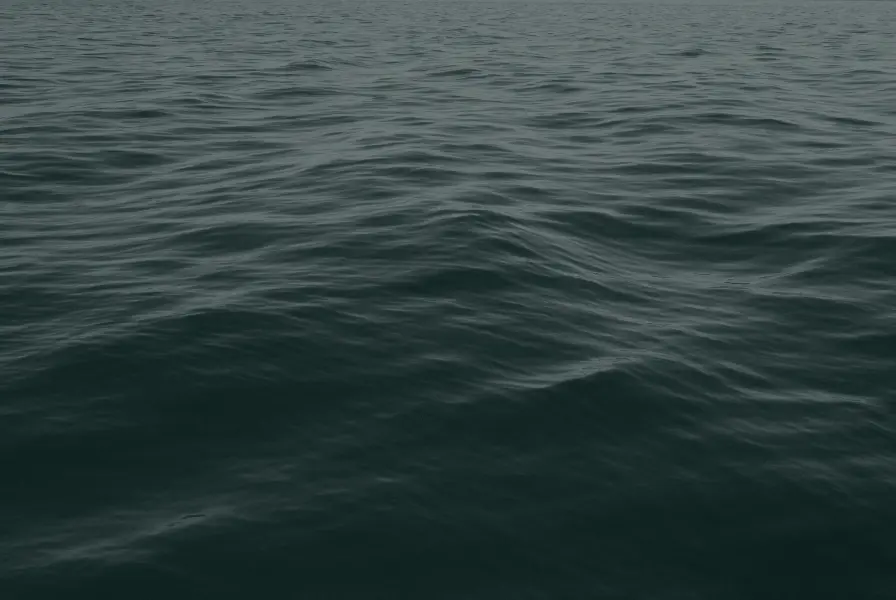Overview
This process uses seawater electrolysis to capture and convert atmospheric CO₂ into two forms: carbonate solids (which can be used in construction) and dissolved bicarbonate ions that are permanently stored in the ocean.
Our supplier’s approach is unique because it does this onshore in a closed system, making it easier to measure carbon removal.
Using electrolysis, water is split into two streams. One stream is acidic, and the other is alkaline. The alkalinity leads to the formation of solid calcium carbonate and magnesium hydroxide. The calcium carbonate formation removes CO₂ from the water and forms solids (limestone) that can be stored or used in construction. In the second step, the alkaline stream containing the magnesium hydroxide solids is contacted with air, which converts atmospheric CO₂ into bicarbonate ions.
The electrolysis process strips the seawater of its magnesium and calcium ions. In order to maintain the original chemistry before the water is re-released into the ocean, the cations are replenished. This is done by running the acidic stream over silicate rocks, which releases magnesium and calcium ions back into the water. Then the two streams are combined again under rigorous monitoring to ensure the water leaving the plant has a similar composition to that that came in, and is compliant with permitting regulations.
